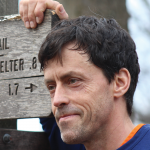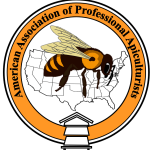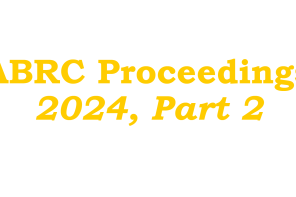By: Jay Evans
Holding The Line On Trait Rot and Inbreeding
This month I describe three challenges in bee breeding along with recent efforts to work around those challenges. As a geneticist, I tirelessly support (mostly from a safe distance) programs to improve the resilience of bees through breeding. History has shown that honey bees contain a continuum of behaviors, defenses, and colony-level traits. This variation has been exploited by beekeepers for decades, in hopes of producing queens, drones, workers, and colonies that are best suited to local climates and show desired survival, behavior or productivity traits. Much of the focus of serious breeding programs is on resistance to Varroa mites or tolerance of these mites when they are in the hive. There is good news on that front, from survivor stock that limits mite fertility (e.g., work on Norwegian bees by Mellisa Oddie and colleagues (PeerJ, DOI 10.7717/peerj.3956) to stock with varroa-sensitive hygiene (VSH, e.g., Robert Danka, Jeff Harris, and their colleagues at USDA-ARS and Mississippi State University, respectively).
It is hard enough to identify and breed from desired traits, but honey bee breeding efforts also suffer from difficulties in hanging on to those same traits. One phenomenon, which I would call “trait rot”, is relentless. Even the best traits get reshuffled each generation, meeting up with additional genes and combinations of genes. At the colony level, desired traits found in worker bees can be further diluted by the sheer diversity of genes across the colony (the “many-dad” syndrome). Unless selection is intense or mating is closely controlled these processes can, and generally do, dampen the strength of initial breeding traits. Were this not the case, breeder queens would not be so pricey relative to their many daughters.
Selection for disease resistance has an added cost in that those being selected against (parasites and pathogens) have their own motives for defeating each resistance trait sent their way. The so-called Red-Queen hypothesis (reflecting the Lewis Carroll character who spends her every minute “running, running, just to stay in the same place”) defines this challenge to both human-driven and natural selection. In short, parasites and pathogens are in an arms race with their bee targets and can be quick to adapt to bee defenses. In the case of Varroa, selection for mites that beat new host defenses mirrors selection on these same mites to defeat the many acaricides used by beekeepers.
Finally, true genetic winners, whether this is accomplished in nature or with a human hand, can be successful so quickly that they abandon genetic variation that is equally important for the longterm survival of bees. This can lead to direct inbreeding costs (diploid males, for one) or subtle losses of genetic variants that could be needed in the future. One example of the latter would be an immune trait for a periodic disease (chalkbrood, viruses, etc.) that was not present in the population under selective breeding. Bee bred from a closed population, until their genes are vetted and merged into the wider gene pool, could have unforeseen but important weaknesses. This is but one downside of genetically modified bees; if they are overwhelmingly successful against, say, Varroa or the viruses tied to Varroa, they run the risk of sweeping through bee populations so quickly that millennia of genetic variation is lost.
Given this backsliding, breeders must identify and promote traits that will be robust and available to beekeepers for multiple generations. Writing in Apidologie (DOI: 10.1007/s13592-015-0413-7) Danka, Harris, and Garrett Dodds show one approach for assessing backsliding, namely screening next-generation bees to see how closely their behaviors match the parent stock. In the case of VSH-selected stock, the authors claim this trait holds up well for one generation of outcrossing, in terms of both the removal of mite-infested brood and total mite loads. Lelania Bourgeois and Lorraine Beaman (also at the USDA-ARS Honey Bee Breeding, Genetics and Physiology Laboratory in Baton Rouge, Louisiana) used a genetic approach to address trait rot with respect to longstanding efforts to breed disease-resistant Russian honey bees (“Tracking the genetic stability of a honey bee (Hymenoptera: Apidae) breeding program with genetic markers“ in the Journal of Economic Entomology; doi: 10.1093/jee/tox175). They first identified a genetic signature for Russian breeding stock using ‘chords’ composed of eight genetic notes. This signature correctly distinguished individual Russian bees from the rest of the population about 80% of the time in the first year of release. While this percentage dipped the first year after release, it has since held steady, increasing confidence in stock integrity. These same genetic tests are also being used to assess inbreeding levels over time, providing a warning when populations become a bit too closed. Insights into the inbreeding costs of intense selection can be gleaned from natural experiments as well. In one study that marries multi-year field work with genetics, Michael Lattorff and colleagues were able to show the famous ‘Gotland’ survivor stock in Sweden lost a substantial amount of genetic diversity between 2000 and 2007. Interestingly, specific regions of the ‘Gotland’ genome showed exceptionally low diversity, a clue these scientists are using to identify genes that were especially successful, effectively ‘sweeping’ neighbors on their chromosomes to high frequencies at the expense of other variants. Their study, “A selective sweep in a Varroa destructor resistant honey bee (Apis mellifera) population” is freely available at https://doi.org/10.1016/j.meegid.2015.01.025.
Next month I will focus on genetic resources for honey bees that can speed efforts to identify key Varroa resistance traits and keep them in the population. These resources include complete genome sequences for many bee species. Comparing across genomes should identify genetic signatures of bees that present (Apis cerana, e.g, a study by Zheguang Li and colleagues, doi: 10.1002/ece3.3802) or lack natural roadblocks to Varroa reproduction.
Jay Evans is the Research Leader for the USDA Honey Bee Lab in Beltsville, MD.










